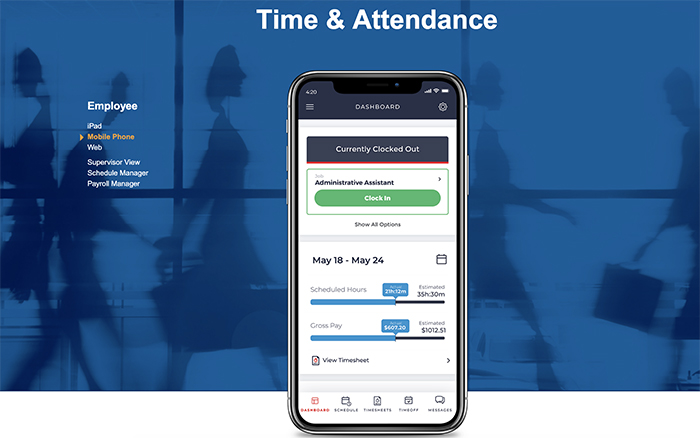Precious time and the software to make the most of it when scheduling employees

As every operator knows, labor hours are one of the biggest costs in the business, usually accounting for 25%-35% of all restaurant expenditures. And the complexity of managing workers’ time inputs—keeping track of hours worked and breaks taken, scheduling shifts, approving paid time off and translating all of that into accurate paychecks—can swallow a lot of a manager’s time, too.
Software available today can greatly simplify time management tasks, improve accuracy and regulatory compliance, and help you understand and rein in out-of-control labor costs to improve your bottom line. Here are some attributes you will want to consider when you’re shopping for an employee time-management program and vendor.
Easier scheduling. Managers know that scheduling shifts is like putting together a 3-D jigsaw puzzle, with multiple layers comprised of time-off and shift-trade requests, changes in hours and the effect of those changes on PTO and overtime calculations. Look for a system with drag-and-drop technology, as well as one that can automatically recalculate the payroll reporting caused with each drag-and-drop change. It’s also important to give employees access to a linked mobile app so they can see schedules, look for open shifts or request changes in their shifts.
Intuitive time tracking. Forget the old-time punch clocks and cards that can be easy to game. Look for a system that supports both pin-punch and iPad clock-ins and clock-outs (at beginning and end of shifts and for breaks). Integrated facial recognition software removes the temptation to punch in for a buddy who’s running late, and GPS-enabled geofencing can prevent check-ins from off site.
Simplified tracking of time off. A good time-management software system can be aligned to your own company’s rules for paid time off as well as state mandates and regulations, and will alert you when an employee is approaching “full-time worker” status. Managers and employees alike should be able to easily check hours earned, used and available for use. Look for a system that also allows workers to use their mobile app to request time off, and to see immediately whether the manager has approved or declined the request.
Integration with other restaurant management software. Most restaurants use multiple vendors to manage back-office operations. If yours is one of them, you’ll want to make sure your time management software can sync with your POS and payroll software so shift scheduling is based on predicted traffic and sales, and time tallies are correctly translated into paychecks. But there are advantages to migrating to a single integrated solution that requires a single log-on and seamlessly transfers data from one application to another, either automatically or with a single click.
Customer support from the vendor. A good restaurant management program is more than software. Make sure the software is backed up by a customer support team of real, knowledgeable people, available by phone or online to answer questions during restaurant-friendly hours.
Learn more about how Heartland can help you upgrade your time management system.